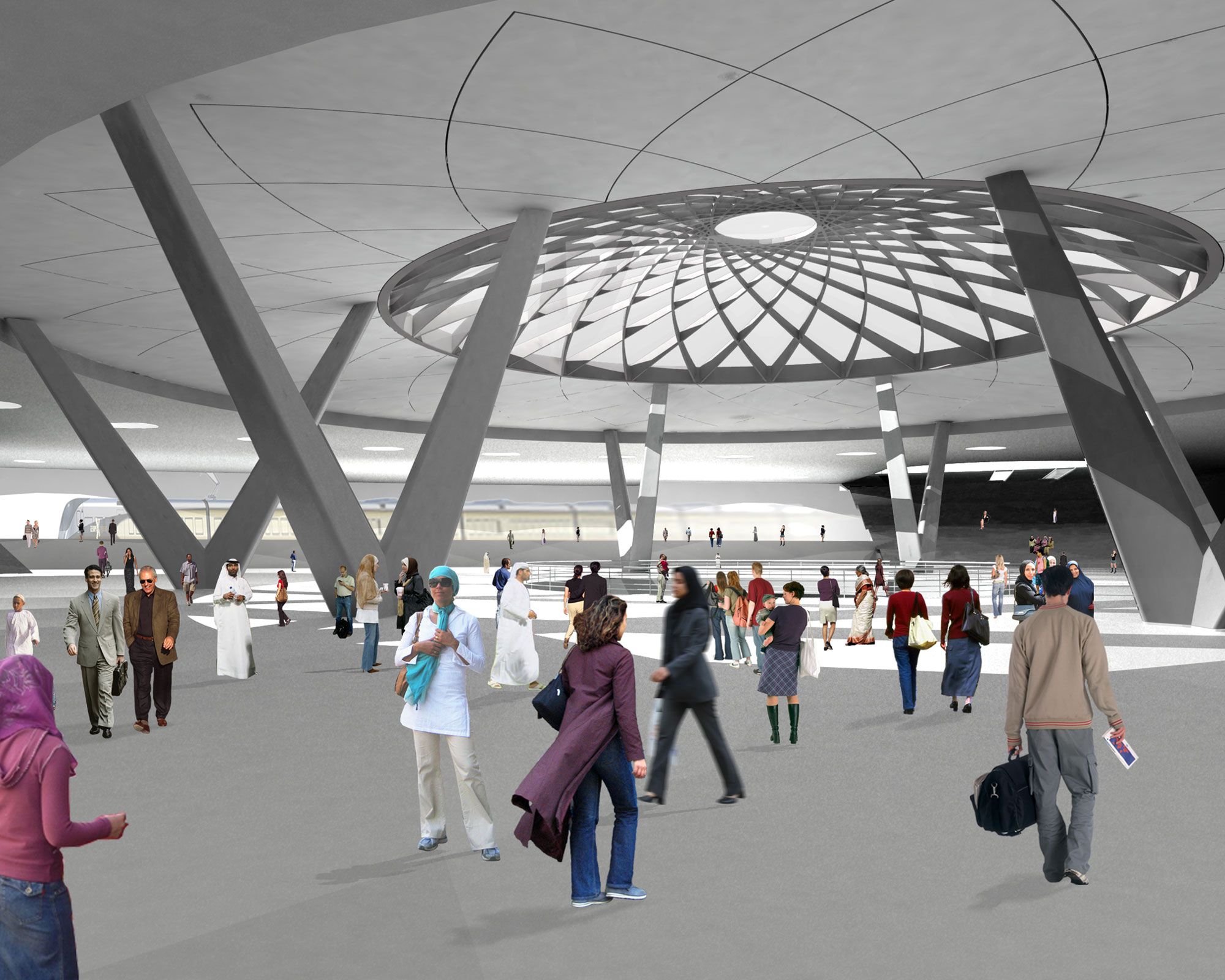
The modern practice of infrastructure planning in hyper-dense Cairo has been one of spectacular devastation to the urban environment.
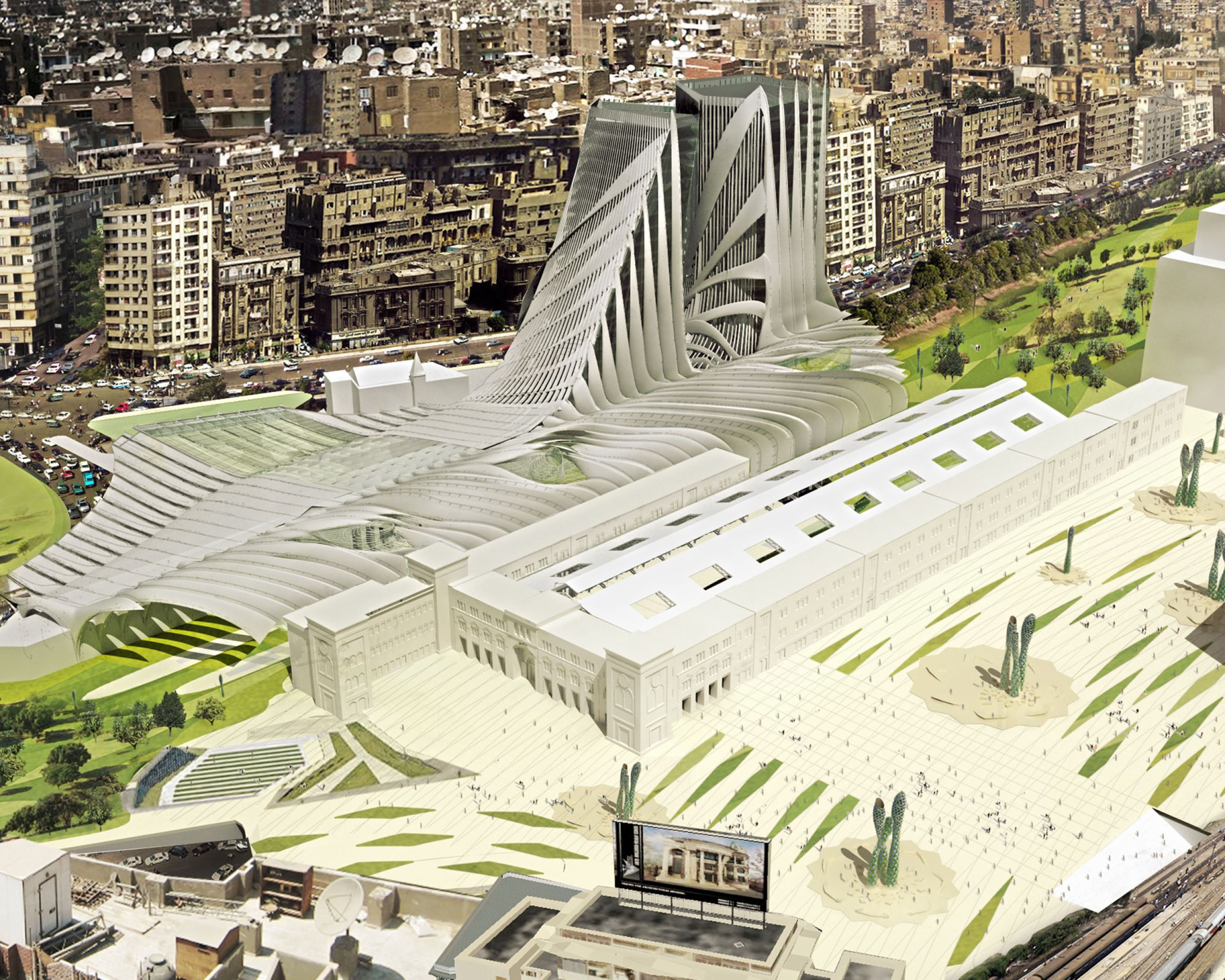
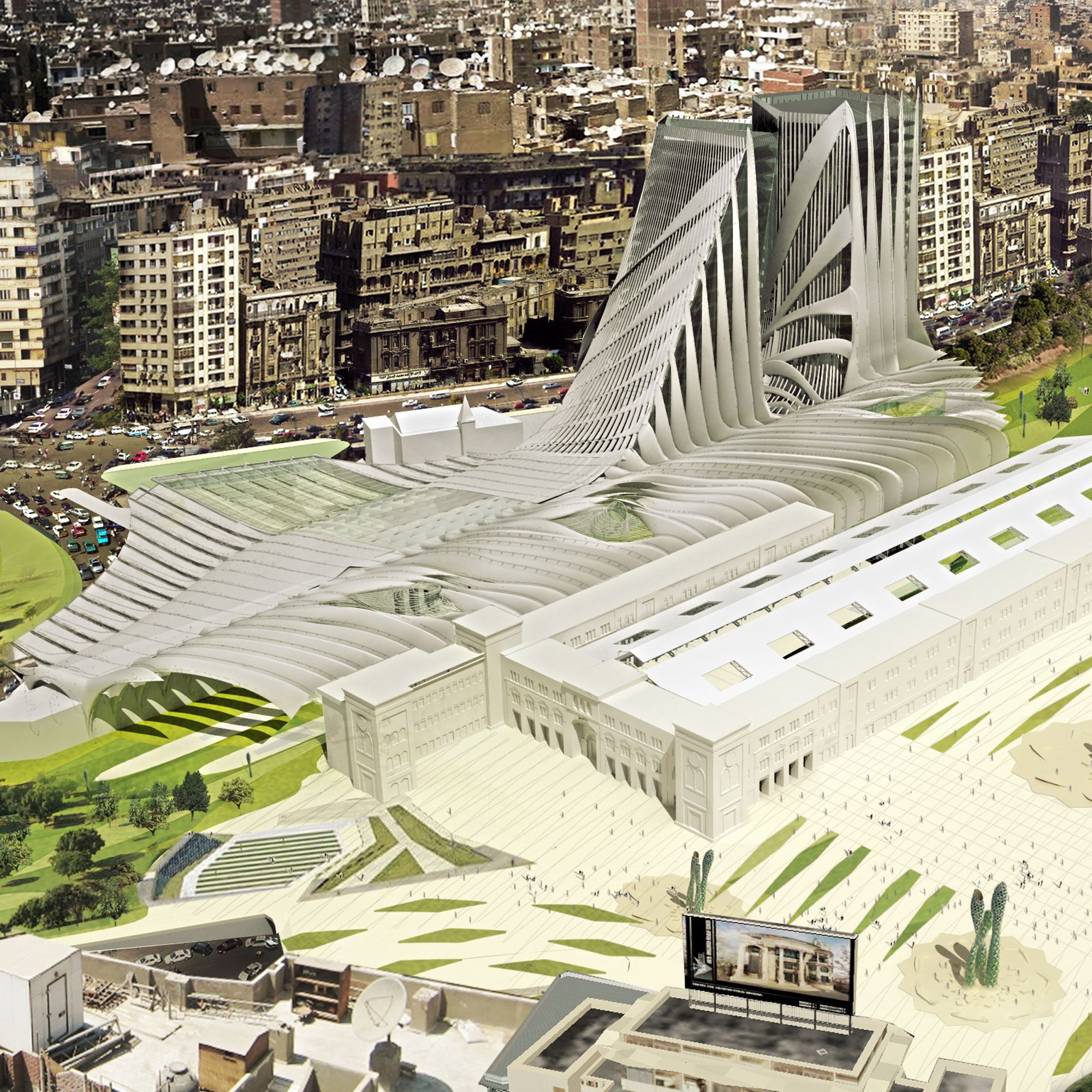
Multi-story highways needle through complex historic fabrics whose foundations were set a thousand years before the invention of the automobile, injecting the city with a congestion of vehicles impossible to navigate in its current street system.
Ramses Square, the epicenter of transportation interchange in Cairo, was the focus of an international design competition hosted by the Egyptian government to seek new solutions and opportunities for the overwhelming problems.
The proposal from Method Design, which led an international team, attempts to project heavy traffic infrastructure into the future by submerging it underground, affording Cairo the ability to continue and extend the social logics of the highly pedestrian city which already exists. Submerged highways and trains begin to create and fulfill underground networks by connecting to the existing tunnels in place. With high velocity traffic and mass transportation below ground, the surfaces along those routes become fully pedestrianized paths, plazas, parks, markets and open public spaces, all of which are needed to transform the choked megalopolis of Cairo into a projective world city.
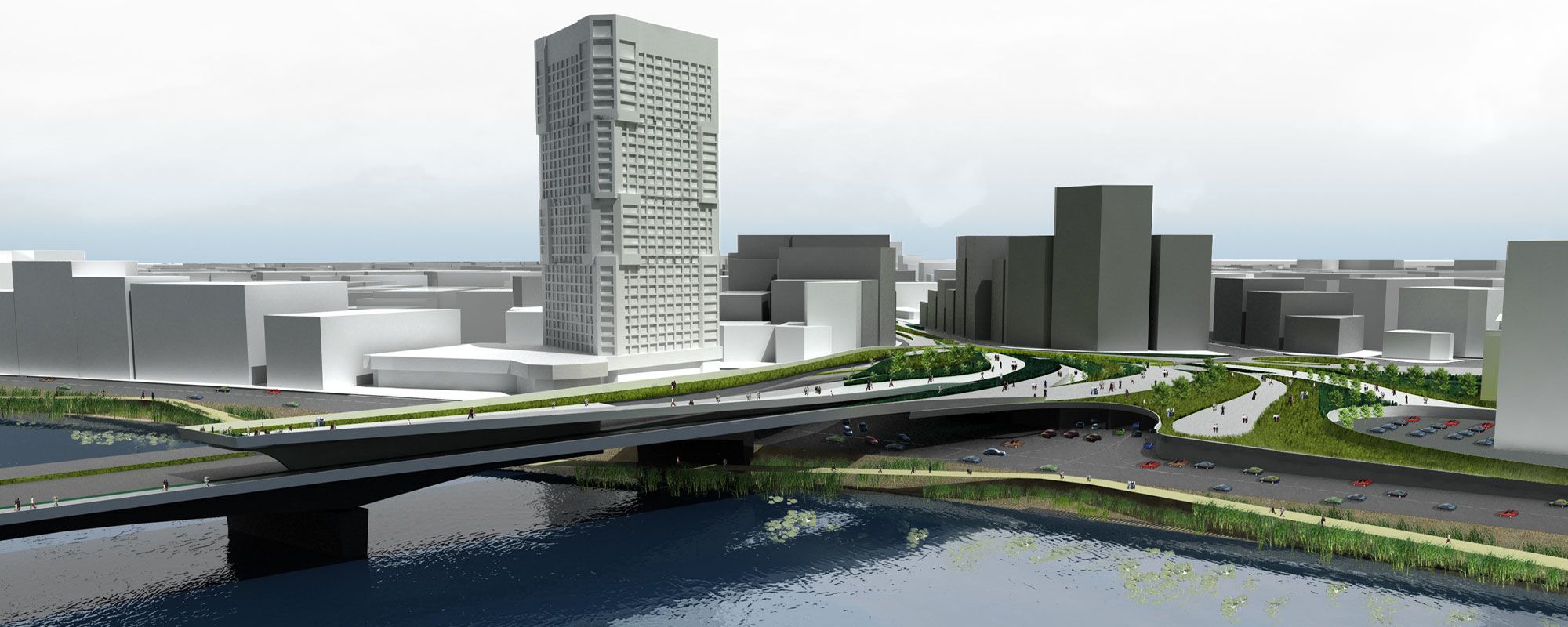
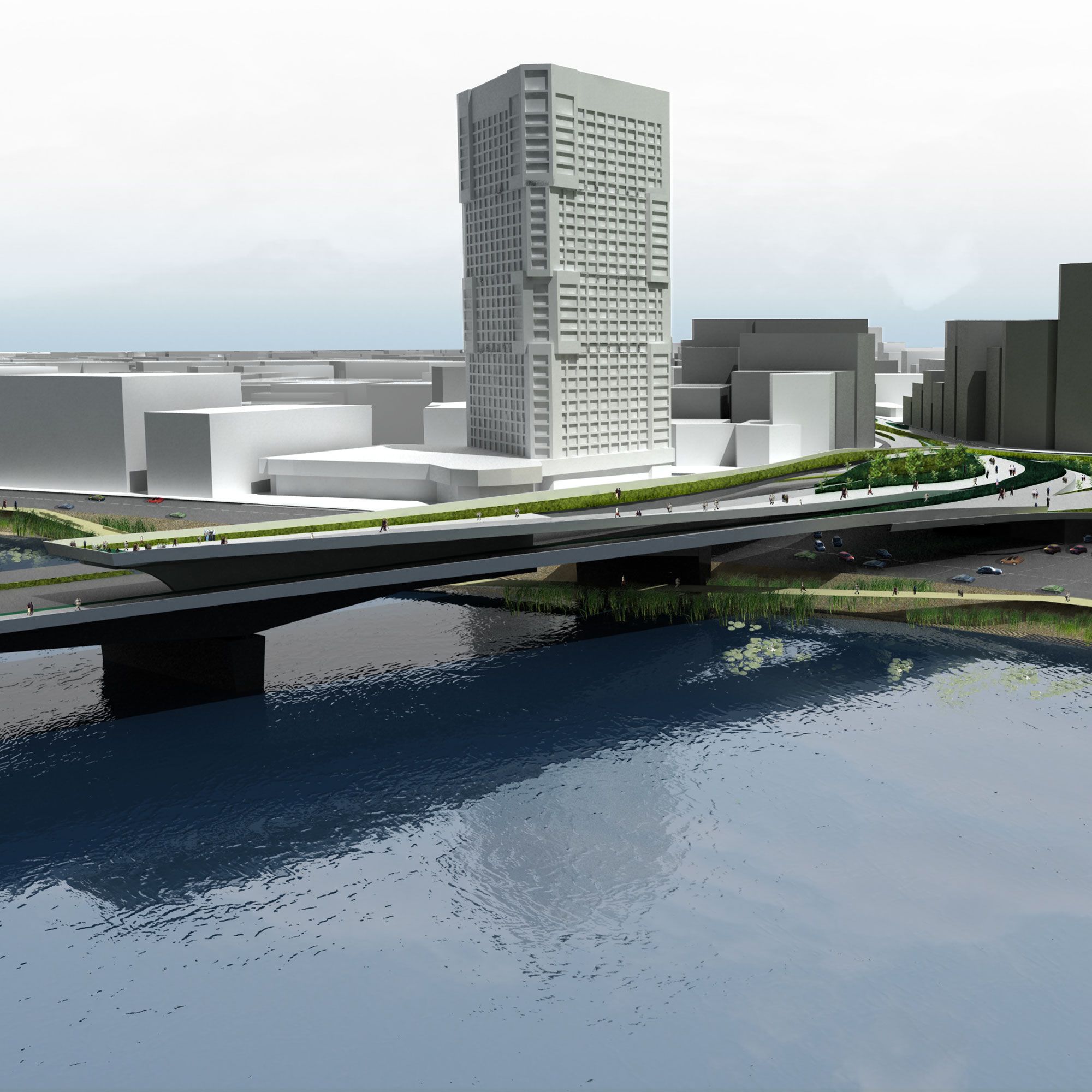
Through process of submerging, extension, and connectivity, the architecture attempts to transform Cairo into a projective world city